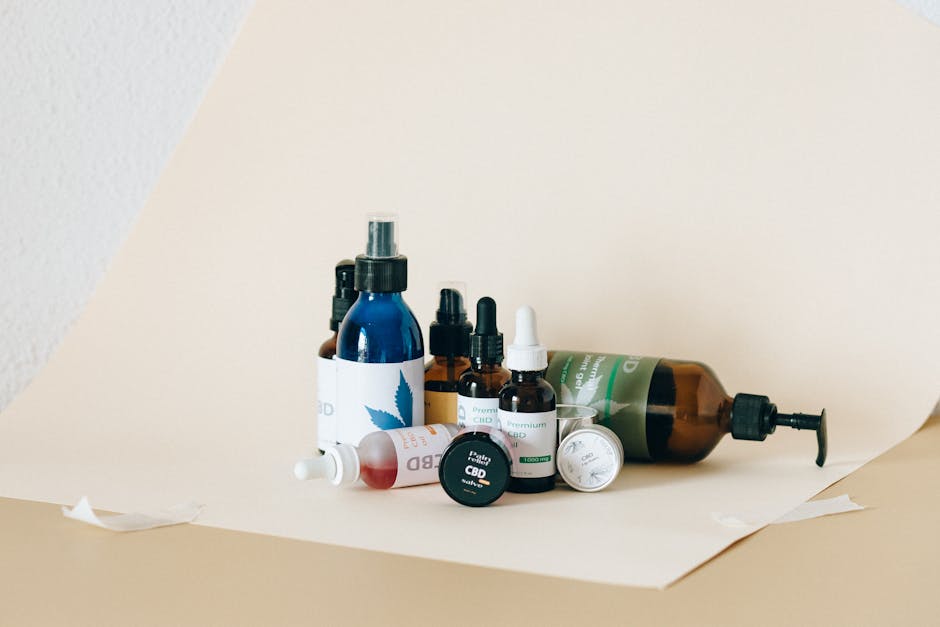From Farm to Face: Soil Quality’s Surprising Impact on Skincare
The soil beneath our feet is much more than a substrate for plants; it is a treasure trove of nutrients and a vital player in the quality of skincare ingredients. Have you ever considered how soil quality affects your favorite beauty products? In today’s beauty landscape, understanding the connection between soil health and skincare ingredients can lead to more informed choices, especially if you’re passionate about sustainability and efficacy.
The Invisible Power of Soil

To appreciate the relationship between skincare ingredients and soil quality, we need to dive into the basics. Soil is rich in organic matter, minerals, and microorganisms—all vital for plant growth. When it comes to skincare, many ingredients are derived from plants, meaning the quality of the soil determines the potency of these ingredients. For instance, the antioxidant levels in a botanical extract can vary dramatically depending on where and how the plant was grown.
Modern skincare often emphasizes “natural” ingredients, but how frequently do we consider the environmental context in which these ingredients are sourced? High-quality soil naturally supports the growth of plants that are rich in beneficial compounds, such as vitamins and antioxidants, while depleted soil can result in weakened plants—leading to less effective skincare products.
The Role of Nutrients in Skincare Ingredients

Different soil compositions yield varying amounts of nutrients, each of which can influence the final skincare product. For example, soil rich in organic matter encourages the growth of medicinal herbs known for their skin benefits. Aloe vera, chamomile, and calendula are often noted for their soothing and healing properties. If grown in nutrient-poor soil, these plants may not develop their full potential.
Soil Health and Botanical Extracts

To delve deeper, let’s examine how specific types of soil contribute to the quality of certain skincare ingredients.
-
Clay Soil: Known for its density and nutrient retention, clay soil can be ideal for growing plants like lavender and rose, which are often used in hydrating and soothing serums. These plants can absorb more minerals from the environment, resulting in a richer extract for cosmetic formulations.
-
Sandy Soil: While not as nutrient-dense as clay, sandy soil allows for excellent drainage. This is beneficial for plants like jojoba, which thrive in deserts. The oil extracted from jojoba is ultra-nourishing, mimicking the skin's own sebum, making it a prized ingredient in moisturizers.
-
Loamy Soil: Considered the best type for growing a variety of plants, loamy soil is a mix of sand, silt, and clay. It supports plants like green tea, which is packed with antioxidants. The better the soil quality, the more potent the green tea extract, which not only combats aging but also calms inflammation.
When you choose products containing these extracts, you might want to check their source. Products from brands highlighting sustainable farming and their commitment to soil health often deliver better results.
Sustainable Farming Practices: A Path to High-Quality Ingredients

As consumers become increasingly aware of sustainable practices, brands are responding by emphasizing their eco-friendly methods. So, what does sustainable farming have to do with soil quality and skincare? The answer lies in several important practices:
-
Crop Rotation: Alternating crops in a field improves soil fertility and helps control pests naturally. This practice ensures that plants are richer in beneficial compounds by enriching the soil over time.
-
Organic Farming: Avoiding synthetic fertilizers and pesticides improves the soil microbiome, fostering richer crops. Not only do such practices yield more nutrient-dense plants, but they also minimize negative environmental impacts.
-
Permaculture: This holistic approach to land use aims to create a self-sustaining ecosystem that improves soil quality over time. By nurturing the soil's health, farmers can produce high-quality botanical ingredients for skincare.
The Rise of Soil-to-Skin Brands

As the eco-conscious consumer market expands, several skincare brands are pioneering the soil-to-skin movement, which correlates ingredient quality directly with soil health. These brands focus on transparency in sourcing and are often willing to share their farming practices. One such brand might include an overview of eco-friendly brands that you can trust.
The Up-and-Coming Research

Recently, studies are emerging that examine the links between soil health and skincare efficacy, showcasing promising future trends. Research from institutions like Harvard Business Review reveals that active compounds in skincare products are more efficacious when their natural pathways—from soil to plant—are intact (source: Harvard Business Review).
Microbiomes and Skincare: What Lies Beneath

Soil isn’t just home to nutritional elements; it also houses a complex community of microorganisms like bacteria, fungi, and protozoa. Interestingly, these same microorganisms exist on our skin and play a critical role in its health. Understanding this connection allows brands to curate better products that respect our skin's unique needs.
In a similar vein, the functionality of the skin microbiome is explored in another insightful piece titled Uncover Your Skin's Secrets. When skincare products harness the power of beneficial microbes—both in soil and on skin—they create formulations that genuinely support skin health.
The Impact of Soil on Synthetic Ingredients

While many products flaunt a natural label, it’s also important to consider the synthetic ingredients derived from fossil fuels. Surprisingly, these too are indirectly tied to soil health as they often rely on the extraction of deep earth materials. The environmental cost of manufacturing synthetic ingredients can lead to concerns related to soil and water contamination, which, in turn, affects the overall ecological balance.
The Future: Corporate Responsibility and Consumer Choices

The intersection of skincare and soil quality highlights the pressing need for companies to commit to soil health actively. As consumers, making informed choices based on a brand's dedication to sustainability can drive market demand for ethically sourced products. This shift not only bolsters your skincare regimen but also paves the way for a more sustainable future. Brands that prioritize sustainable practices often report higher consumer loyalty, paving the path towards wider compliance with eco-friendly standards.
In the coming years, we can expect advancements fueled by technology to help assess the quality of soil and botanical extracts, ultimately leading to more effective formulations. For customers, keeping an eye on brands that embrace these innovations can ensure that your skincare routine aligns with not just your skincare needs, but also your ecological values.
Educating Yourself: Rethinking Skincare Approaches

With an increasing array of products available, honing in on what truly affects skin health becomes complex. In this age of information overload, knowledge is power. To learn more about how external factors impact your skincare results, check out resources like The Science Behind Skin Flushing for invaluable insights.
The Bigger Picture: Soil, Beauty, and Health

Not only is soil quality pivotal to skincare, but it's part of a holistic understanding of health and beauty. The deeper you dig into the topic, the clearer it becomes that what nourishes the Earth also nourishes our bodies. So, as you incorporate beauty products into your regimen, remember that every layer—from soil to skin—matters.
Next Steps: Making Informed Choices
As you explore your skincare routine, take a moment to examine the source of your products. Opt for brands that emphasize ethical sourcing and sustainable farming practices. Consider starting a conversation about the importance of soil quality in skincare at your favorite beauty stores or online communities. By demanding more transparency, you can inspire a shift toward a future where your beauty is truly skin-deep.
Final Thoughts
Your skincare products are only as good as the quality of the ingredients that comprise them. Recognizing the influence of soil quality offers a fresh perspective on wellness. As the skincare industry evolves, the bond between nature and beauty becomes increasingly vital. By prioritizing sustainable practices that begin “from farm to face,” we can make choices that not only enhance our skin but contribute to a healthier planet.


